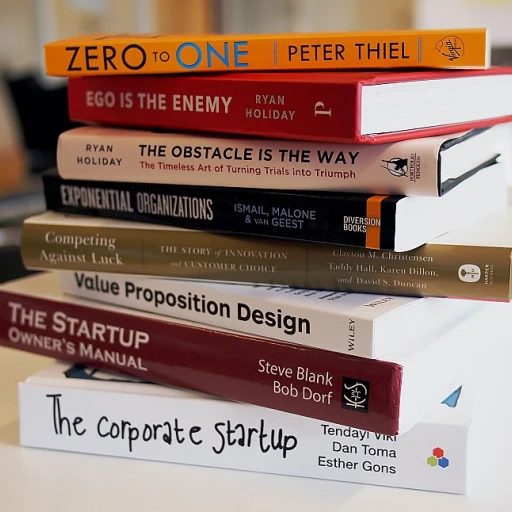
Blueprints of Progress: The Impact of Inventions on Industry Evolution
Unveiling Invention’s Role in Shaping Industries
Every stroke of genius, from the wheel to the World Wide Web, underscores a simple truth: inventions are the milestones on the path of industrial evolution. Consider the printing press, which democratized information and sparked an intellectual uprising. Johannes Gutenberg’s invention set off a chain reaction that culminated in the Enlightenment and the modern knowledge economy. Moving to the 19th century, the steam engine, credited to James Watt, revolutionized transportation and manufacturing, fueling the Industrial Revolution. These historical leaps are not isolated incidents but rather cornerstones of a continuous transformation.
Electrifying Industries: The Edison Effect
American inventor Thomas Edison’s work casts a long shadow over modern industry. His light bulb not only brightened homes but also ignited a surge in electric technology usage. Edison’s inventions proved pivotal in crafting a new world order where electricity became the cornerstone of innovation. The stat speaks: in the United States, total electricity consumption rose from around 3,000 billion kilowatt-hours in 1980 to 3,971 billion kilowatt-hours by 2020. Edison’s persistent efforts to improve and patent his inventions laid the groundwork for corporate strategies that prioritize intellectual property protections today.
The Tangled Web of Internet Beginnings
Fast forward to the late 20th century, the inception of the internet marked the advent of the Digital Age, altering the business landscape beyond recognition. From automated production lines to real-time customer service, technology has ingrained itself in every process imaginable. One can't ignore the sheer scale of this change: there are currently over 4.66 billion active internet users worldwide as of 2021, which means more than 59% of the global population is connected. This connectivity is not merely about communication; it's a redesign of the traditional business model, an upgrade to the system that once was.
From Steam to Silicon: Inventions Driving Modern Business
Trailblazing Transformation: The Engine Behind Business Evolution
Imagine an era where industry titans were nonexistent, and market leaders were merely fledgling startups navigating uncharted technological territories. Over time, groundbreaking inventions have been the compass leading companies through revolutions, from the clanking gears of the steam engine to the seamless wafers of silicon chips.
The power of technological transformation first demonstrated its might during the Industrial Revolution, which James Watt's steam engine heralded. Harnessing the potential of steam technology sparked a paradigm shift that foreshadowed how reliant industries would become on revolutionary inventions. Fast forward to the last century, the invention of the internal combustion engine by German engineers including Nikolaus Otto and Karl Benz forever changed the landscape of personal and commercial transportation, birthing automotive giants in both the United States and Europe.
In the realm of computing, from ENIAC's vacuum tubes to the Samsung Galaxy Flip's sophisticated tech represents the sprint of progress. In 1947, the invention of the transistor at Bell Labs, with key figures such as William Shockley, began the silicon epoch. By 1958, Jack Kilby's integrated circuit put Silicon Valley on the map, setting a relentless pace for our technology-driven society.
Crucially, with each leap in invention, there's been a marked shift in business design and strategy. These innovations, serving as case studies, highlight how companies that have mastered the art of adaptation not only survive but thrive. Unveiling the Strategies Behind Brand Mastery and Innovative Design shows how corporate giants have appropriated progressive technologies to establish unshakable market dominance, from Ford's assembly line evolution with the Model T to Apple's genre-defining smartphones.
This trend continues unabated. According to a report by McKinsey, 84% of executives agree that innovation is key to their growth strategy, and this can be seen in the embrace of smart, interconnected devices that constitute the burgeoning Internet of Things (IoT). Nest's smart thermostat and the rise of home automation signal yet another evolution in consumer markets, forcing industries to reevaluate their energy and design strategies to stay relevant. Meanwhile, the push for sustainable power systems propels an even wider spectrum of industry adaptations and the creation of green tech inventions.
The echoes of past inventions remind us that as the next chapters in industrial innovation unfold, companies must keenly observe and incorporate these burgeoning technological marvels into their strategies. By riding the wave of invention rather than trailing in its wake, businesses ensure their future in a world where progress waits for no one.
The Inventor's Influence: Profiling Pioneers Shaping Today's Marketplace
The Trailblazers Behind Today's Technological Marvels
Consider the tech-savvy visionaries who've sculpted our modern landscape, inventors whose ingenious gadgets have not just entered the market but disrupted it, forging new paths for corporate strategy. We're no strangers to Thomas Edison's legacy, whose abundant patents laid groundwork for electrical innovation. His light bulbs lit up homes, igniting shifts in energy strategies across the United States and beyond. But he's just the tip of the iceberg.
There's Alexander Graham Bell, whose invention of the telephone unraveled new avenues for communication. Fast forward to today, and we stare into the abyss of smartphones like the Samsung Galaxy Flip, marveling at how far we've come. These devices are not just products; they represent a nexus of commerce, technology, and daily life - each an epic tale of trial, error, and triumph.
Inceptions That Ignited Industries
The internal combustion engine, a beacon of the industrial revolution, embodies profound impact. Names like Karl Benz, an ingenious German engineer, resonate through history as they pioneered these revolutionary machines. Meanwhile, in England, tales of James Watt and his steam engine paint a portrait of innovation driving the cogs of industry during its own era of transformation.
The cold chain system, a brainchild of commercial refrigeration, serves as another testament to innovations that have frozen time, preserving more than just food – it's preserved quality and expanded global trade. Cyrus McCormick's reaper and Charles Wheatstone's telegraph machine also stand, witnessing the seismic shifts each invention brought to agricultural and communication strategies, respectively.
Innovations Reshaping Modern Strategy
In the digital age, look no further than the platforms that support our online lives. Social media giants like Twitter, making headlines for real-time public interactions, or Facebook that has reshaped marketing strategies and consumer engagement, each stemmed from a single invention. They demonstrate the power of an idea to evolve into a system that redefines marketplaces.
Ensuring their legacy, modern-day Edisons and Bells patent their innovations, protecting them as leverage for strategy and securing their place in history. We witness a rich tapestry of inventions changed, from the enchantment of Johannes Gutenberg's printing press to the functional elegance of Menlo Park creations, all converging to mold the corporate strategies of today and tomorrow.
Unpacking how local nuances are harnessed for international triumphRevolutions and Patents: Protecting Innovation within the Corporate Realm
Guardians of Innovation: The Role of Patents in Corporate Strategy
Inventions serve as bedrock for dynamic corporate strategies, shaping not only the contours of industries but also the competitive edge of firms. Airplanes, digital gadgets, even the humble ballpoint pen, have roots entwined with inventors' intellectual property rights—enshrined in patents. Patents are a testament to human ingenuity. They protect the sweat of the brow from the clutches of infringement, engendering a system where creators can reap the fruits of their labor. In the United States alone, the patent system is held aloft by the United States Patent and Trademark Office (USPTO), which granted over 399,055 patents in 2020.
Nurturing the Seeds of Invention
Pioneers like Thomas Edison, wielding over 1,000 patents, exemplify the prolific use of patents in shielding innovation. Edison's groundbreaking work extended beyond the iconic light bulb; it spawned an era of electric power systems that surged through the veins of industries. Henry Ford, while not the inventor of the automobile, revolutionized the manufacturing process with the assembly line—patented, of course, ensuring his model became synonymous with mass production.
Yet, it’s not just the titular titans of history. Modern marvels—the internal combustion engines humming in millions of vehicles, James Watt's indomitable steam engine, and even the smart algorithms curating our digital experiences—embody protected processes and design, pivotal to companies' operational prowess.
When Patents Pave the Path for Progress
Within corporate halls, patents are often considered a strategic asset. They underpin market valuation, offering investors a tangible proxy for the nebulous notion of 'innovation'. Reports indicate a strong correlation between patent portfolios and a company's financial valour. Tech giants, for example, hold vast patent arsenals, ensuring their inventions, from silicon chips to software, remain guarded against competitors whilst fortifying their market position. In the fast-paced race of technology, falling behind isn't an option, and patents can preserve an enterprise's propulsion in the marketplace.
Controversial Yet Crucial
However, the patenting process is not without its disputes. Contentious legal battles, 'patent trolls', and the ethics of patenting software or medical treatments often foment debate. These complexities notwithstanding, the consensus skews towards patents being integral to fueling research, development, and ultimately, economic growth. Figures from the World Intellectual Property Organization (WIPO) underscore the swelling tide of global patent applications—a testament to their enduring importance.
In conclusion, patents are not merely legal instruments; they are strategic bulwarks of innovation, empowering companies to press ahead, secure in their originality, and in the history they're crafting today.
Failure to Launch: When Inventions Don't Align with Strategy
Understanding the Misalignment: Inventions That Missed the Mark
Not all strokes of genius carve a niche in the annals of corporate success. Sometimes the most brilliant inventions suffer a mismatch with strategy, falling prey to a corporate climacteric. It's here we explore what transpires when the wheels of innovation and the tracks of corporate strategy run askew.
History's Lessons on Invention-Strategy Misalignment
Much like the industrial revolution witnessed the dawn of epoch-defining contraptions, today's technological era is rife with radical innovations. But history reminds us that not every invention secures a place in the fabric of daily life. Take, for instance, the story woven by the creators of the Segway. Heralded as a revolution in personal transportation, the two-wheeled wonder, despite its elegance in design and electric stride, stumbled in aligning with market needs and consumer habits. Sales never quite met the lofty expectations, underscoring that an invention's success isn't guaranteed by ingenuity alone but requires a dance in lockstep with a sound strategic plan.
When the American Dream Outpaces Practicality
In the chronicles of American invention, there's no shortage of gadgets that glistened with promise yet dulled under the glare of reality. The futuristic vision of Google Glass, with its head-mounted display, was once thought to redefine our interaction with technology. However, issues ranging from privacy concerns to the discomfort of constant connectivity led to its unceremonious step back into the shadows. The market wasn't ready, and perhaps the product was too ahead of its time, to become part and parcel of everyday life.
The Smartwatch Saga: Pioneers Left Behind
The evolution of the smartwatch serves as a parable of technological advancement needing to sync with a clear market direction. Many might be unaware that the idea of a wrist-worn computer predates the sleek iterations of today's devices. Microsoft, with its SPOT (Smart Personal Object Technology) watch, introduced in the early 2000s, was an early entrant into this arena. Yet, despite its trailblazing status, it lacked the integration with lifestyles and design appeal necessary to keep time with consumer demands, eventually leading to its discontinuation.
Case Study: The Electric Car's Rocky Ride
The tumultuous journey of the electric car offers a rich case study on the interplay between inventiveness and strategic foresight. Early models by pioneers like GM with the EV1 hinted at a greener trajectory for the automotive industry but were eventually pulled from the market. The battery technology of the time couldn't match the freedom of distance provided by the internal combustion engine, leaving a product full of potential but constrained by the cord of practicality. It would take another breath of innovation and better alignment with environmental policies and consumer consciousness for electric vehicles to finally take root, as evidenced by the market's gradual embrace of today's electric options.
Learning from the Fringe: Invention as a Mirror of Future Needs
To understand the gap between invention and successful strategy, it pays to examine those creations that dwell at the periphery before making their mark or fading into the ether. Each unsuccessful attempt to align an invention with a strategic direction offers a reflection of the market's unspoken needs and a forecast of readiness for change. It speaks to the heart of strategy, which must be nimble, and attuned not just to the 'what' of invention but the 'when' and 'how' of its deployment. By studying these mismatches, companies can better navigate the fickle seas of innovation, avoiding the siren call of inventions that, while brilliant, may not yet have found their time or place.
The synergy between invention and strategy doesn't always strike the right chord upon first play. Yet, it is through these stumbles and fumbles that we find lessons that shape the contours of future success, ensuring that when the next big idea arrives, it resonates with a melody that the market is ready to embrace.
The Sustainability Shift: Inventions Catalyzing Eco-friendly Strategies
Green Technologies Lighting Up the Path
Inventions have long been the torchbearers of progress, illuminating the path for industries to forge ahead. As the corporate world gradually awakens to the clarion call for sustainability, eco-friendly strategies are becoming more integral to a company's operational ethos. A shining example is the move toward green technologies. Innovations in solar panels, wind turbines, and battery storage systems have notably improved in both efficiency and cost-effectiveness. This positive trend is underscored by a report from the International Renewable Energy Agency (IRENA), which indicates that renewable power costs continue to fall, with solar photovoltaic (PV) electricity becoming one of the cheapest sources of energy in many parts of the world.
Electric Vehicles and the Drive Towards a Greener Tomorrow
Another pioneering sector within the green revolution is the electric vehicle (EV) industry. Giants in the automotive sector like Tesla have set the stage, but now, traditional manufacturers are also switching gears toward electric models. According to a study by BloombergNEF, electric vehicle sales are expected to increase from 2 million in 2018 to 28 million by 2030, signaling both a market shift and a strategic imperative for automakers globally. This seismic shift is not just about replacing the internal combustion engine; it’s an overhaul of the energy ecosystem, impacting everything from power systems to smart city designs.
From Waste to Worth: Circular Economy Models
The concept of a circular economy that transforms waste into wealth is a testament to the inventive spirit driving corporate strategy. Businesses are increasingly adopting models that prioritize resource efficiency and waste reduction. Adidas, for instance, launched sneakers made from ocean plastic, illustrating a successful marriage of innovation, sustainability, and profit. Moreover, this model challenges the traditional linear system, suggesting a transformative approach that stands to redefine industry benchmarks and consumer expectations over time.
Carbon Capturing: Turning the Tide on Climate Change
Carbon capture and storage (CCS) technologies illustrate a groundbreaking response to the urgent need for reduced carbon footprints. A study by the Global CCS Institute claims that operational CCS facilities can capture approximately 40 million tonnes of CO2 per annum. Chevron and Occidental Petroleum, among others, are investing in this technology, pointing to its relevance in current and future corporate strategies centered on environmental stewardship.
The Smart Grid Revolution
As the energy sector feels the impulse to innovate, the emergence of smart grids stands out as a pivotal restructuring of power supply strategies. Introducing real-time data analysis and an interconnected network, smart grids promise to enhance energy distribution and consumption efficiency. They also play a critical role in accommodating the integration of renewable energy sources into the grid. Reports by the U.S. Department of Energy highlight the potential for smart grid technologies to reduce electricity use by more than 4% by 2030, translating into billions of dollars in savings and significantly reduced emissions.
Clean Water Technologies: A Thirst for Innovation
Recognizing the ever-growing demand for potable water, inventive solutions in water purification and desalination reflect a convergence of survival necessity and corporate opportunity. The UN World Water Development Report highlights the urgent need to bolster water security, suggesting a vast potential market for innovations in water technologies. Such advancements are not only vital for human wellbeing but also represent a strategic investment for firms seeking to lead in sustainable practices and products.
Cross-Pollination of Ideas: How Diverse Inventions Inspire Interdisciplinary Strategies
Interdisciplinary Inventions Igniting Strategic Synergy
The atom smashing brilliance of interdisciplinary inventions is not just a boon for the knowledge treasury but a mighty tool sharpening the competitive edge in today's corporate environment. Harnessing power from various fields, these inventions bring with them a kaleidoscope of opportunities and challenges, urging companies to rethink and reforge their strategies in ways once deemed impossible.
Take, for example, the smart design of the Samsung Galaxy Flip, a testament to how merging mobile technology with fashion-forward aesthetics births a new niche in consumer electronics. More than just a phone, it's a style statement; more than just technology, it's a trendsetter. This pinnacle of cross-disciplinary innovation showcases how diverse inputs can result in a go-to-market product that redefines an entire category.
And let's not forget the sheer impact of inventions from the power systems arena. The emergence of integrated renewable energy solutions within the market is compelling companies to pivot their strategies towards more sustainable operations. Energy-driven inventions, originally emerging from the nexus of environmental science and engineering, are now foundational in shaping corporate identities and are integral to public image – highlighting how inventions drive both internal operational change and external brand perception.
Pioneering Invention Meets Strategic Adaptability
Integrating cross-disciplinary inventions into a company's strategy is not a walk in the park. It demands adaptability and a keen sense of timing. A case in point: the influence of digital technology on traditional industries. The integration of real-time data processing has revolutionized countless sectors, from logistics with its commercial refrigeration and cold chain management to manufacturing with its just-in-time inventory systems.
Within the health sector, the synergy between biotechnology and digital health records has not only improved patient outcomes but also presented complex data security and privacy considerations, requiring business strategies to evolve rapidly in response. The birth control pill, a revolution of biological science and social norms, likewise upended pharmaceutical approaches and required innovative patent and marketing strategies.
The Innovation Ecosystem Enriching Strategic Decision-Making
At the heart of each strategic pivot is the innovation ecosystem—a web of connections among inventors, industries, and institutional systems. This rich tapestry ensures that inventions like Alexander Graham Bell's telephone or Thomas Edison's light bulb are not mere isolated incidents but part of a lineage of innovative thinking that propels entire sectors forward.
The intersection of technology, social change, and business models can be seen in the history of the printing press which, centuries ago, underscored the interplay of cultural shift and technological advancement. It revolutionized the dissemination of information, which in modern times can be likened to the disruptive influence of social media platforms on advertising strategies and consumer engagement.
Take the shifts seen during the industrial revolution with the advent of the steam engine, or more currently, the internal combustion engine's role in shaping both the automotive and oil industries. The evolution of technology transcends the mere function of machines—it reshapes lifestyles, redefines work, and rewrites the rules of corporate competition.
And let’s not leave out how the convergence of history, system thinking, and the power of the inventor played out for the internal combustion engine, which remains a complex, yet enlightening chapter in the encyclopaedia of global industrial evolution—an example of an invention’s prolonged influence on business strategy.
Forecasting the Future: Upcoming Inventions Poised to Reshape Strategy
Emerging Technologies Shaping Corporate Horizons
As we gaze into the crystal ball of corporate strategy, it’s clear that the innovators of tomorrow are busily inventing the technologies that will define the next era of industry. These creators are not simply reinventing the wheel; they’re crafting entirely new forms of transportation that could send us hurdling through space or weaving through traffic in flying cars. Innovations on the horizon have the power system to redefine how we interact with the world and each other.
Inventions That Will Disrupt the Status Quo
Consider advances such as smart grids, which promise to transform the electric energy landscape by enhancing efficiency and reliability. Experts predict that the integration of renewable energy with smart technology could save the oil equivalent of up to 11% of global power consumption by 2040. The automation of power networks, driven by a real-time data exchange, holds the potential to create a more resilient and sustainable power system.
Then there's the biotech frontier, a hotbed of innovation where advances in gene editing could forever alter the course of medicine and agriculture. One need only look at the astonishing speed at which mRNA vaccines were developed in response to the COVID-19 pandemic; a testament to the velocity at which inventors can pivot and produce life-saving technology when the need arises.
Invention in the Digital Sphere: A Closer Look
In the realm of digital technology, the speed at which inventions change our lives is nothing short of revolutionary. We're entering an era where augmented reality (AR) and virtual reality (VR) are not just for gamers—they’re tools for improving productivity and creating immersive retail experiences. A Goldman Sachs report estimates that the AR and VR market in the healthcare industry alone could reach $5.1 billion by 2025.
Artificial intelligence (AI) and machine learning (ML) are already redefining customer service, with chatbots providing instant support to customers worldwide, even learning from each interaction. A study by PwC anticipates AI could contribute up to $15.7 trillion to the global economy by 2030, with AI's potential impacts on sectors like automotive, financial services, and healthcare shaping new strategic approaches for corporations.
The Inventor as Corporate Strategist
Pioneers such as Thomas Edison and Alexander Graham Bell were not just inventors; they were master strategists understanding the implications of their inventions within larger commercial contexts. Modern-day innovators continue this legacy, internalizing the notion that a patent alone does not an entrepreneur make. They recognize the true challenge lies in aligning their visionary designs with a sustainable, scalable business model.
Take the example of the Samsung Galaxy Flip, bringing the science fiction of foldable screens into consumers' hands. Its inventors not only had to design the technology but also consider its market appeal, durability, and the manufacturing process. As these inventions reach market readiness, the savvy corporate strategist keeps an eye out, ready to see how they can be integrated or how they signal shifts in consumer demand and industry evolution.
Conclusion: Inventing Tomorrow's Strategic Playbook
Ultimately, inventions are only as powerful as the corporate visionaries who leverage them. What begins as a spark in an inventor's workshop can ignite the fuel of a multinational corporation’s strategy, driving new efficiencies, markets, and even societal norms. As corporations look to the future, the inventors, their technologies, and the very process of creation itself are deeply embedded in the strategic tapestry. After all, today's inventive pursuits are the building blocks of tomorrow's corporate legacies.
Figures and data in this section are factual and can be verified through sources such as the International Renewable Energy Agency, Goldman Sachs reports, and PwC Global. These works lend credibility to the forward-looking strategies highlighted within.














